Increase sales and gain more insights about your customers. What’s not to love?
We live in a world that depends on data, especially when it comes to running a successful business. As a small business owner, what if you have all the data you could ever want, but you’re not taking full advantage?
Well, for starters, you’re leaving revenue on the table. You could also be missing out on opportunities to improve your customer experience, advance your products and services, and ultimately meet your company goals. In fact, a 2021 Capterra survey found that 72% of small business owners view CRM software as very effective or moderately effective in helping them achieve their business goals.
If you don’t want to miss out on the advantages of a strong approach to CRM data management, you need to make sure you not only have a robust CRM, but that it’s well integrated with your other software as well.
To help you accomplish that, this guide will share what CRM integration means then discuss some common CRM features that allow for seamless integration with other tools.
What is customer relationship management?
Customer relationship management (CRM) is a system of strategically overseeing customer interactions, behaviors, and experiences, especially in digital marketing. CRM analyzes customer resource use to improve future experiences and drive increased profits. It usually involves software that tracks customer interactions such as opening emails, clicking links, visiting a website, and more.
What is CRM integration?
CRM integration is the act of using data from your company’s CRM platform in conjunction with other software to improve business processes. Many companies use their CRM as a “source of truth” when it comes to mapping out the customer journey from beginning to end, making CRM integration a powerful tool for any growing business.
/ Something to note
In this article, you will learn about exporting data from your CRM platform to another tool. The process of CRM implementation involves importing data from another tool to your CRM.
Common CRM features that allow for seamless integration to other tools
A CRM is all about connecting the dots between your business and your customers. Whether that’s how they interact with your content online, the sales process, or generating and nurturing leads, the goal is to gain insight into how best to serve your customers so you can earn more of them and keep the ones you have coming back for more.
Below are some common applications of CRM integration to help further the goal of strengthening your CRM as a source of truth. These applications will aid you in organizing customer information to make smarter decisions faster in all areas of your business.
Marketing campaigns
One key feature of CRM integration is the ability to link marketing campaigns, such as email or text, with your CRM application. For email specifically, this allows any messages to or from customers to be added into an overall communications timeline that’s available in your CRM.
That means anyone in your organization can get a quick view of analytics, a customer’s position in the marketing pipeline, or check in on communication and action items without the need for intervention by the original recipient of the message or access to the marketing automation software.
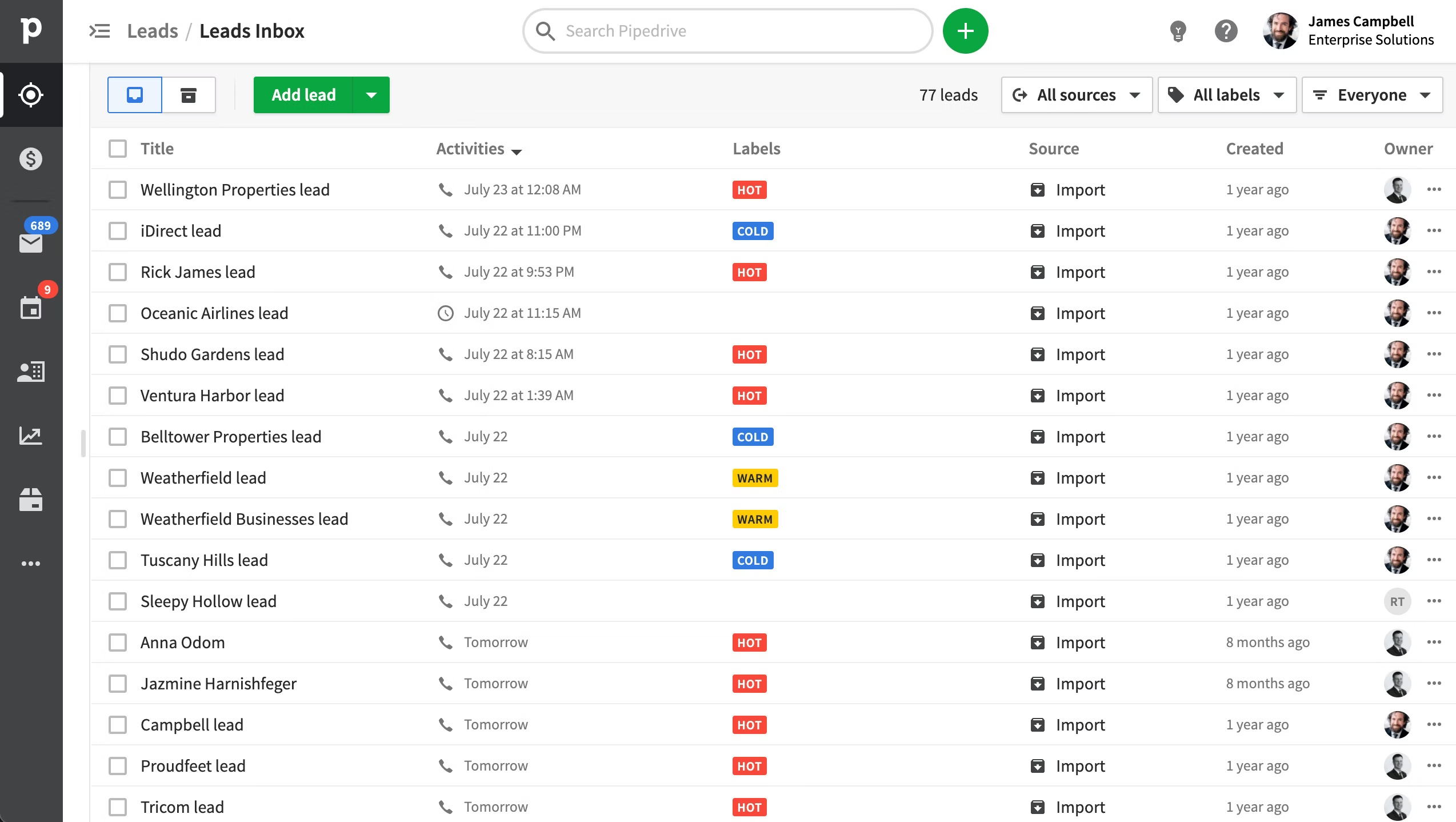
An example of a leads inbox from Pipedrive (Source)
Financial information
One of the most common and sought after CRM integrations is accounting software. Applications like Quickbooks can be linked with your CRM system to give everyone on your sales team an easy view of a client from an accounting perspective.
With a view of the entire sales pipeline, you can proactively plan based on a customer’s past purchase behavior and even identify opportunities to intervene and potentially close a sale quicker. Not only that, but when you have data related to the bottom line readily available, you can make smarter, more informed decisions that will save money (and help you earn more).
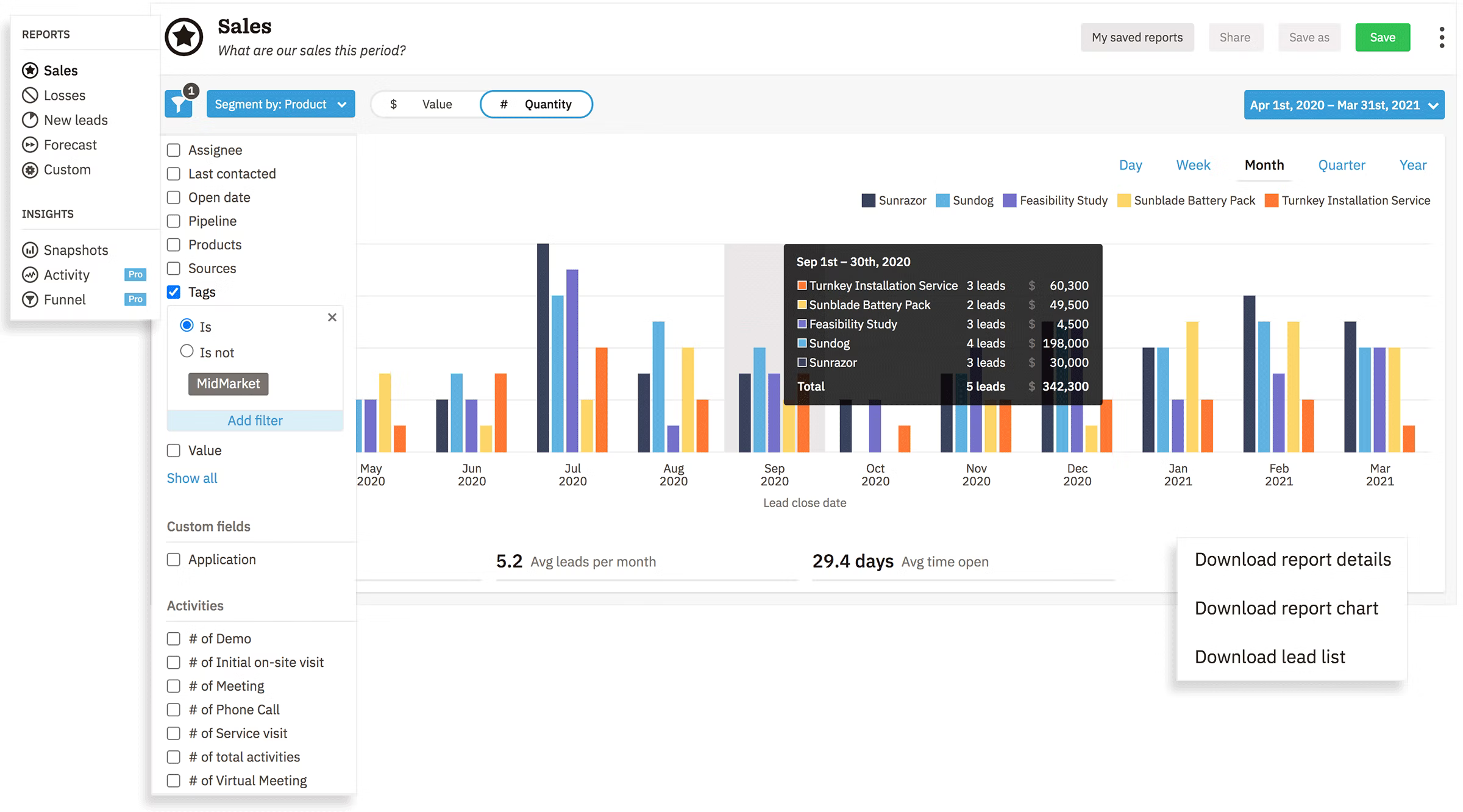
An example of a sales dashboard from Nutshell (Source)
Project management
Another area where CRM integration can be a game changer is project management. Many pieces of project management software feature CRM integration that allows you to link customer data to tasks within the platform.
This is especially powerful if multiple teams work within the platform—it removes a layer of complexity when it comes to communication and information sharing, giving everyone a holistic view into the customer experience.
If you’ve ever been managing a project and ended up waiting on small tasks to be completed to move forward, this feature is for you. Info collected from customers and entered into the CRM is automatically reflected in the project management tool, lessening the chance of that information sharing becoming a process blocker.
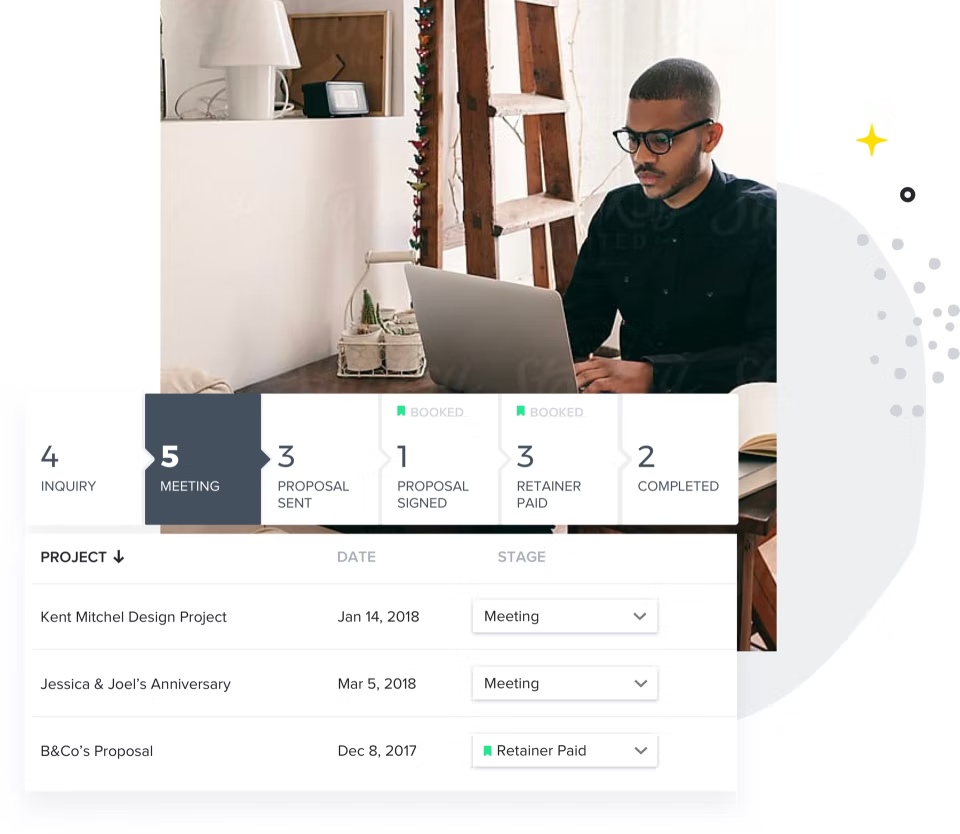
An example of the project management feature in HoneyBook (Source)
Social platforms
One last use of CRM integration that’s especially useful is combining your social media management software with your CRM. The main benefit is being able to connect the dots between touch points on social media and the customer journey in your CRM.
Managing leads in this way removes the often-nebulous process of tracking interest and conversion opportunities on social media by connecting that information with customer profiles in the CRM and allowing you to communicate with potential customers on their preferred platform.
In a customer-facing sense, they get a seamless communication experience, and in a business-facing sense, you get a holistic view of the customer journey and don’t need to worry about how to track leads from the social platform alone.
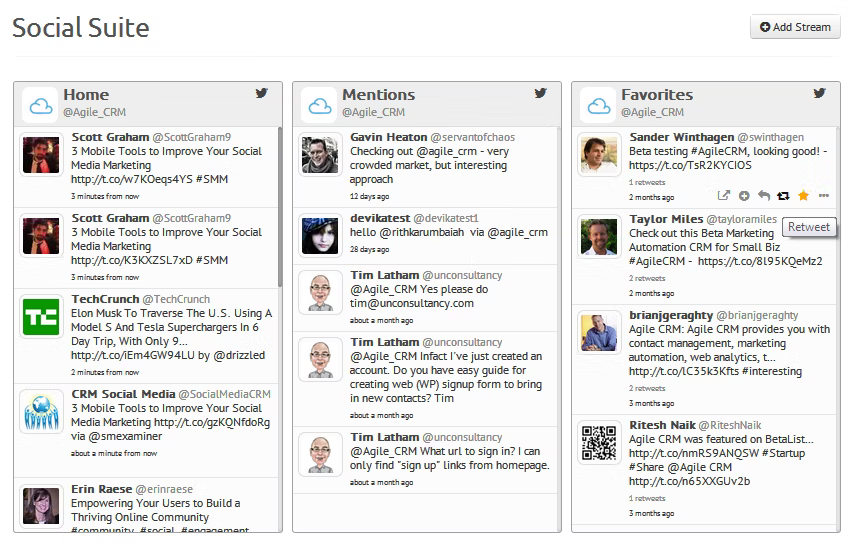
An example of social media integration from Agile CRM (Source)
Not all CRMs are created equal when it comes to integrations
As you explore the integration process, one of the more important things to remember (and account for) is that not all CRMs feature the same integration opportunities. You’ll want to do some research on your particular CRM system and the types of software that integrate well with it. Depending on the current tools you use, there are likely options that will be more or less successful.
Ask yourself questions like the following to determine the right path for you:

What should you do if your integration isn’t easy?
While many types of software commonly offer CRM integration features themselves, there are also CRM integrator services specifically designed to help with the process of creating a connection between your CRM and other types of software. These services leverage cloud technology to intelligently integrate software without the need to write extra code, making for a smarter and faster integration process that can adapt to rapid changes in your business.
One drawback of these services is that this type of convenience can come at a premium price. It may be well worth it if you’re hoping to maintain a source of customer truth as you integrate multiple pieces of software or you foresee many changes in your business processes over time.
There’s also the possibility of a custom data integration solution that goes beyond a mere CRM integrator, with enhanced functionality that allows you to build and customize your interactions, automations, and even your own apps. This could be a great route for you, but keep in mind that it could dramatically increase the amount of time it takes to get your new integrations up and running.
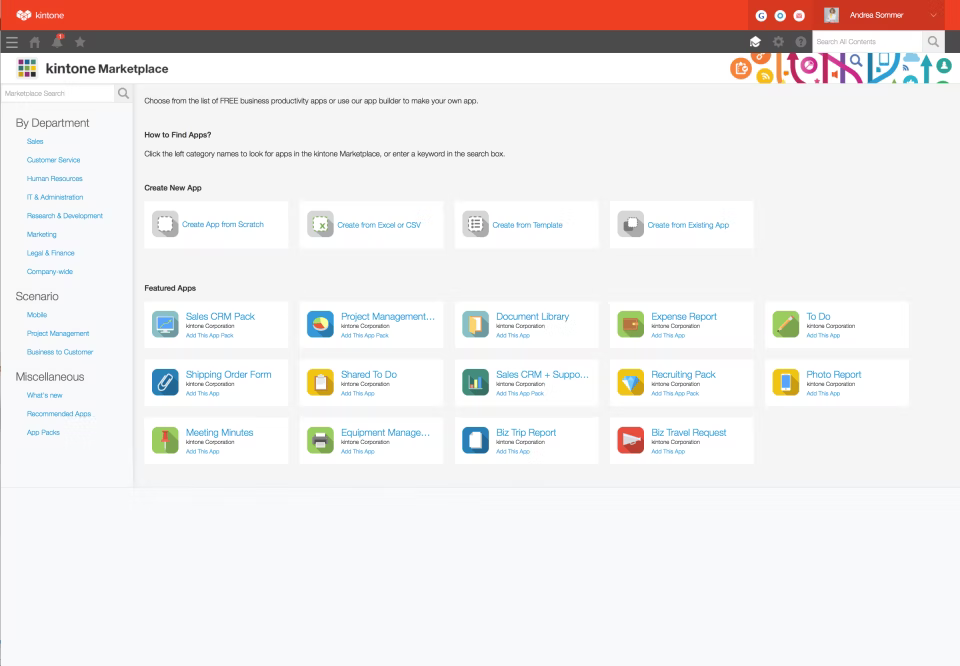
An example of easy-to-use app coding technology, including CRM integration, from kintone (Source)
Turn your customer data into more sales by integrating your CRM with more software
At this point you know integrating new software into your CRM is no small feat. But—equipped with this guide—you’re well prepared to tackle the issue and create a seamless connection between your CRM platform and your other tools of the trade.
This is one of the most powerful marriages you can have when it comes to your marketing and sales technology, and, if you’re curious to learn more, we also have resources on how to choose a CRM platform and how to implement data you’ve already collected into a CRM platform.
Embracing this methodology will help you find and create insights about your customers that can be used to further understand their wants, their needs, and how you can better serve them.
